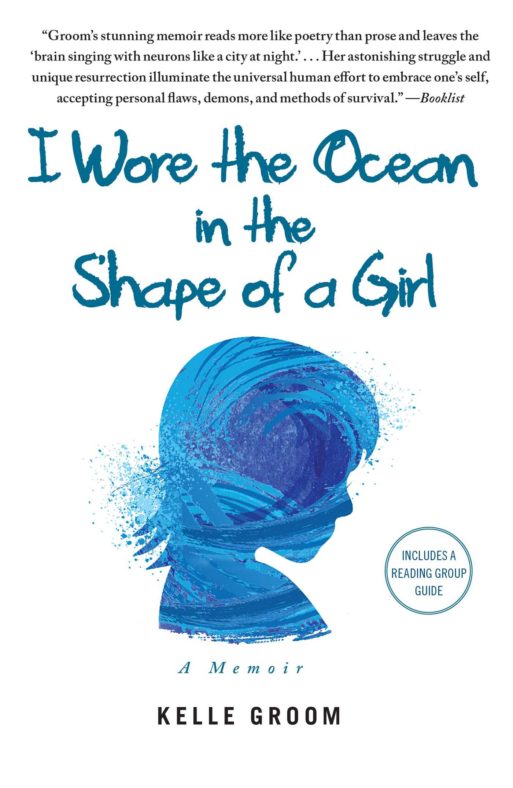 Author Kelle Groom draws on her award-winning poetry-writing skills to craft this haunting memoir. With little concern for chronology or tense, she leads the reader through a story instead guided by a series of ideas – subjects meaningful for one reason or another at various points throughout her troubled life.
Author Kelle Groom draws on her award-winning poetry-writing skills to craft this haunting memoir. With little concern for chronology or tense, she leads the reader through a story instead guided by a series of ideas – subjects meaningful for one reason or another at various points throughout her troubled life.
Groom found alcohol at the age of 15, and quickly became lost in its grip, drunk at school, underage at bars, and running through a string of destructive relationships. At 19, she was pregnant. Less than at-ease with the fact that she would not be able to care for the child herself, she gave her son up for adoption at birth to an aunt and uncle in Massachusetts. At nine months old, Tommy was diagnosed with Leukemia, and died 5 months later, in 1982. The times dictated that the boy’s new parents ought not speak of his history, and Kelle’s family kept her carefully separated from her son throughout his short life. They offered only minimal information even through his illness, treatment, and after his death.
Though it opens heavily with Groom’s partying, sex life, and struggles with alcohol abuse – she writes extensively about her time in and out of various AA programs – this book is largely about loss. Through poetically vague language, the author draws the reader’s attention throughout the memoir to the details of the pain and confusion she feels at the losses that plague her life. First, at giving her son away, then the unknowns that surround his death, and the loss, illness, and death of various friends, family, and loved ones throughout her life.
The details of Groom’s life are hard to keep track of throughout her story because of the lack of structure to the plot of the book. It’s a story that may require a second read to fully take in. Letting go of the details, though, the reader is drawn inside the head of the woman. We get an abstract impression of who she is, and a little understanding of why. The writer bares her soul, fittingly, and does not spare herself in the process. She shares her struggles with her own self-loathing, her selfishness, her fears that despite her enduring love for the child she has lost she would not have been fit to be his mother. She touches often throughout the story, especially in her later years, on her own selfishness, presumably with an understanding gained through hindsight, and makes herself a more dynamic and, indeed, more likeable character for it.
By sharing her stories, Groom opens a window into the mind of grief and loss. She expresses lyrically the agony she feels in her confusion and guilt about giving away her son and the circumstances surrounding his death. The story is certainly sad throughout; the author keeps the tone almost dark with descriptors like “the color of ash”. Yet, there is a constant tone of hope in the beauty with which she describes the world around her. Despite repeated setbacks and the continued focus on loss and pain, I Wore the Ocean in the Shape of a Girl screams with hope and optimism for the future, as it shares the trials of a woman deciphering her past.

 I Wore the Ocean in the Shape of a Girl by Kelle Groom
I Wore the Ocean in the Shape of a Girl by Kelle Groom



 Composting Bodies Is Now Legal in a Dozen States
Composting Bodies Is Now Legal in a Dozen States















